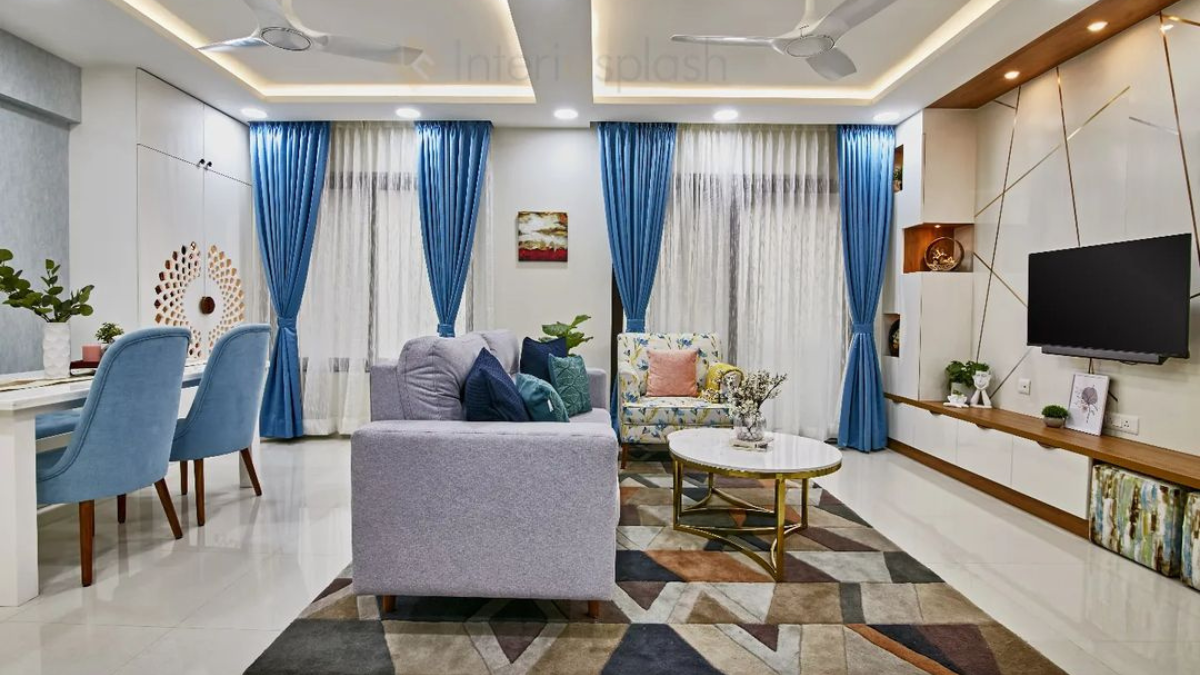Introduction
Luxury interior design has always been a field of constant evolution, where the boundaries of creativity, sophistication, and innovation are pushed further with every passing year. As we move deeper into the 21st century, the landscape of luxury interior design is set to undergo significant transformations, influenced by technological advancements, shifting consumer preferences, and a growing awareness of sustainability. This article delves into what the future holds for luxury interior designers in Bangalore and the trends that will shape the industry in the coming years.
1. The Rise of Sustainable Luxury in Interior Designs
In recent years, sustainability has moved from a niche concern to a central focus in the world of luxury interior design. As more clients and designers become conscious of their environmental impact, the demand for eco-friendly materials and practices is on the rise.
- Eco-Friendly Materials: The future of luxury interior design will see a surge in the use of sustainable materials such as reclaimed wood, recycled metal, and organic textiles. These materials not only reduce the carbon footprint but also offer a unique aesthetic that appeals to modern sensibilities.
- Energy-Efficient Solutions: Luxury interior designers are increasingly integrating energy-efficient technologies into their projects. From smart lighting systems that minimize electricity consumption to high-performance insulation materials that reduce energy loss, these solutions are becoming staples in luxury homes.
- Sustainable Sourcing: The future will also witness a greater emphasis on sourcing materials from ethical suppliers. Luxury interior designers will prioritize suppliers who follow fair trade practices and support local communities.
2. The Integration of Technology in Luxury Interior Designs
Technology continues to revolutionize the luxury interior design industry, offering new possibilities for personalization, convenience, and innovation.
- Smart Homes: The concept of smart homes is no longer a futuristic idea but a reality that is rapidly becoming mainstream. Luxury interior designers are at the forefront of integrating smart home technologies, including automated lighting, climate control, and security systems, all controlled via smartphones or voice-activated assistants.
- Virtual Reality (VR) and Augmented Reality (AR): These technologies are transforming the way luxury interior designers present their ideas to clients. VR and AR allow clients to experience their future spaces in a virtual environment before any physical work begins, enabling them to make informed decisions and providing a more immersive design process.
- 3D Printing: The use of 3D printing in luxury interior designs is expected to grow, allowing designers to create customized furniture and décor elements with intricate details that would be difficult to achieve through traditional manufacturing methods.
3. The Influence of Globalization on Luxury Interior Designers
Globalization has broadened the horizons of luxury interior design, bringing diverse cultural influences into play and creating a more interconnected world of design.
- Cultural Fusion: The future of luxury interior design will see an increasing blend of global styles. Designers will draw inspiration from different cultures, combining elements such as Japanese minimalism with French opulence or Scandinavian simplicity with African textures, to create unique and eclectic interiors.
- International Collaborations: As the world becomes more connected, luxury interior designers will collaborate more frequently with international artisans and craftsmen. This will lead to the creation of bespoke pieces that reflect a fusion of global design traditions and modern luxury.
- Global Sourcing: Luxury interior designers will continue to source materials, furniture, and art from around the world. This global approach not only adds a layer of exclusivity to the designs but also supports the preservation of traditional craftsmanship.
4. Personalization and Customization in Luxury Interior Designs
As clients seek to express their individuality through their living spaces, personalization and customization will become even more central to luxury interior design.
- Bespoke Furniture: The demand for bespoke furniture that reflects the client’s unique taste and lifestyle is set to rise. Luxury interior designers will work closely with skilled craftsmen to create one-of-a-kind pieces that are tailored to the client’s exact specifications.
- Artisanal Craftsmanship: The future of luxury interior design will see a revival of artisanal craftsmanship. From handwoven textiles to custom-made ceramics, these handcrafted elements will add a personal touch to luxury interiors, making each space truly unique.
- Personalized Technology: With the integration of smart home systems, luxury interior designers will be able to offer personalized technology solutions that cater to the specific needs and preferences of their clients. From custom lighting scenes to personalized climate control, the possibilities are endless.
5. The Shift Towards Wellness-Focused Interior Designs
As health and well-being become increasingly important to consumers, luxury interior designers are focusing more on creating spaces that promote physical and mental wellness.
- Biophilic Design: The incorporation of natural elements such as plants, water features, and natural light into interior designs is known as biophilic design. This trend is gaining popularity in luxury interior design for its ability to enhance well-being and create a calming, serene environment.
- Wellness Amenities: Luxury interior designers are now integrating wellness amenities such as home spas, meditation rooms, and yoga studios into their designs. These spaces are designed to provide clients with a retreat from the stresses of daily life, offering a sanctuary of relaxation and rejuvenation.
- Healthy Materials: The use of non-toxic, hypoallergenic materials is becoming a priority in luxury interior design. From low-VOC paints to formaldehyde-free furniture, these materials contribute to a healthier indoor environment.
Conclusion
The future of luxury interior design is set to be an exciting blend of innovation, sustainability, and personalization. As luxury interior designers continue to push the boundaries of creativity, they will also be guided by a deepening awareness of the impact of their work on the environment and the well-being of their clients. With the integration of cutting-edge technology, the influence of global design trends, and a focus on wellness, the luxury interiors of the future will be more than just beautiful spaces—they will be reflections of a more conscious and connected world.

No Responses